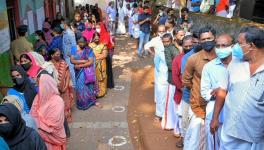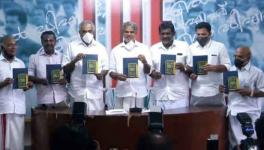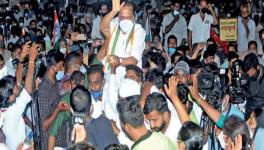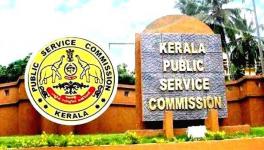Damaged Palarivattom Flyover Reflects Corruption During Oommen Chandy Government
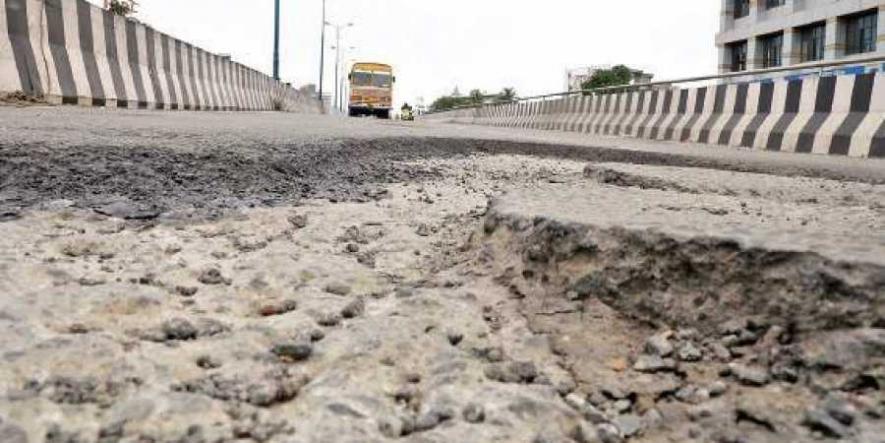
Image Courtesy: New Indian Express
The 750 metre long Palarivattom flyover, one of the longest of its kind, which was meant to ease the traffic in Kochi, Kerala, has been in news for the past one month for alleged corruption during its construction.
The flyover in National Highway 66 bypass, built at a cost of Rs 39 crore, was commissioned in October 2016. However, within two years of commissioning the project, large cracks and potholes have appeared in it threatening the life of public. Almost 90% of the work had been done under the previous United Democratic Front Government led by then Chief Minister Oommen Chandy. The flyover was built by the Roads and Bridges Development Corporation of Kerala Limited (RBDCK), a subsidiary of the Public Works Department (PWD).
E Sreedharan- the principal advisor of Delhi metro who was also instrumental to the implementation of Kochi metro- on Monday, June 17, inspected the flyover following the direction from Chief Minister Pinarayi Vijayan. Sreedharan has been asked to submit a report and the government would take the final call on whether the flyover needs to rebuilt or not as per the report.
Further work will be decided after considering the final report of IIT Madras, Sreedharan said after visiting the damaged structure. Though rebuilding the structure would cause huge financial liabilities, the structure cannot exist in the present form, he said in a meeting of experts.
Read More: CVC Awaits Sanction to Prosecute 123 Govt. Officials for Corruption
A team from the IIT Madras had examined the condition of the structure and submitted an interim report detailing the magnitudes of large cracks and potholes that appeared in it. The team led by P. Alagusundara Moorthy, Professor of Structural Engineering Laboratory, Department of Civil Engineering in IIT-M found that the major errors during the construction resulted in formation of cracks within girders and pillar caps of the flyover. The team also observed that the cracks over girders and pillar caps were caused due to inadequate usage of cement and steel, which is indirectly pointing towards the large scale corruption at the time of its construction.
The team had suggested that the rectification could be done using Carbon Fibre Reinforced Polymer (CFRP) method, also known as Carbon Fibre Wrappings. The team has even supervised the first set of repair and rehabilitation works of the structure.
The traffic over the flyover was initially banned for a 30-day period till May end for replacing the deck-continuity expansion joints, but has been extended since then. The second phase of the rehabilitation work will be carried out for a three-month period after the monsoon, from September.
Kochi, being the commercial capital of the state, has seen a rise in the number of vehicles. The number of registered vehicles has jumped to 31,111 in 2018 from 22,163 in 2009.
However, the state minister for Public Work Department, G. Sudhakaran had stated after an inspection of the damaged structure that administrative and professional lapses by officials of RBDCK and Kitco (the project’s design and technical consultant), along with the apathy of the previous UDF government, led to the flyover getting damaged within months of its inauguration in October 2016. This also caused dozens of accidents, mainly involving two-wheelers.
“The slack supervision by both the agencies, coupled with unscrupulous practices like inadequate usage of cement and steel, which reek of corruption led to the flyover developing cracks as well,” he said.
Read More: Aviva Insurance Allegedly Bribed Punjab & Sind Bank Officials to Sell Off Insurance Products
He also pointed out the negligence of Kitco for not giving due care to the design and other critical parameters of the flyover which was readied by New Delhi-based contracting firm RDS Projects.
Earlier, in September last year, the cracks on pier caps of various pillars of the flyover had been detected by a private bridge inspection agency. “The recorded shear cracks are propagating and widening. Additionally, new shear cracks have been recorded in the girders,” the report had said.
Vigilance Report
Soon after the flyover was closed raising the security concerns, the Vigilance and Anti-Corruption Bureau (VACB) started to probe into the construction of the flyover. A case has also been registered against the RBDCK and concerned contractor under section 13 (1)(d), section 13(2) of Prevention of Corruption Act 1988 and Section 120 (B)(d) of the Indian Penal Code.
The vigilance bureau on early June submitted a report on the condition of the flyover to the Muvattupuzha Vigilance Court. The report revealed that the structure is in a dangerous condition and poses a threat to the life of people and properties which cannot be solved with maintenance.
Demanding a probe against Road and Bridges Managing Director Muhammed Haneesh and seventeen other officers related to Palarivatton Bridge scam, the report also asks to obtain the money that needed for the construction, from the company.
Get the latest reports & analysis with people's perspective on Protests, movements & deep analytical videos, discussions of the current affairs in your Telegram app. Subscribe to NewsClick's Telegram channel & get Real-Time updates on stories, as they get published on our website.










